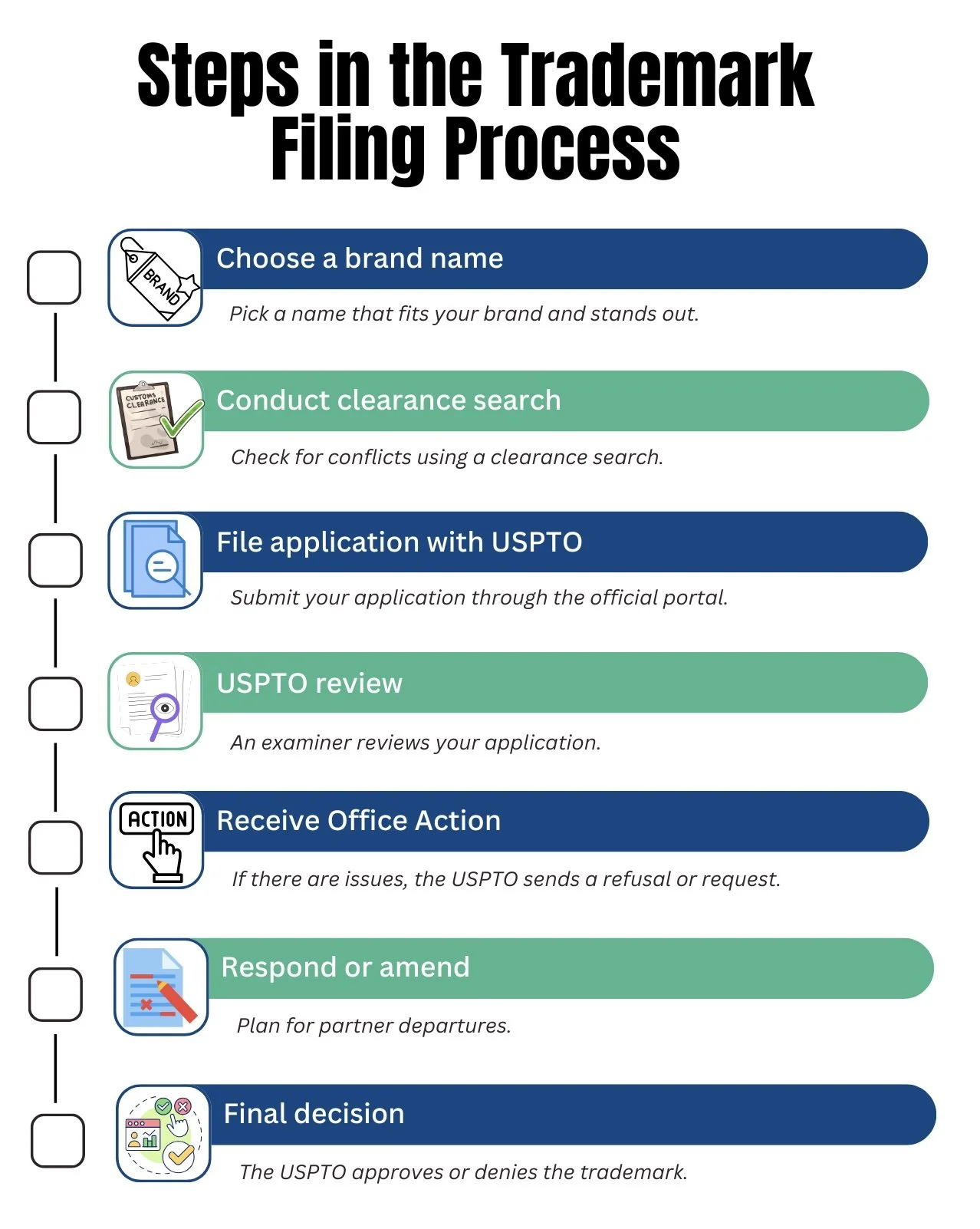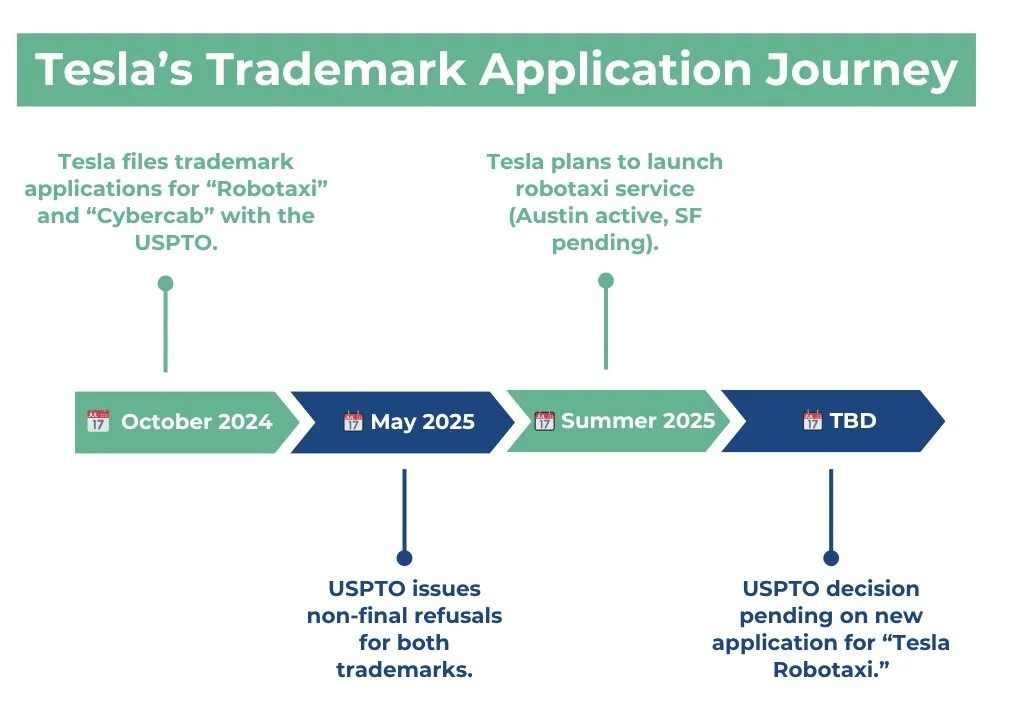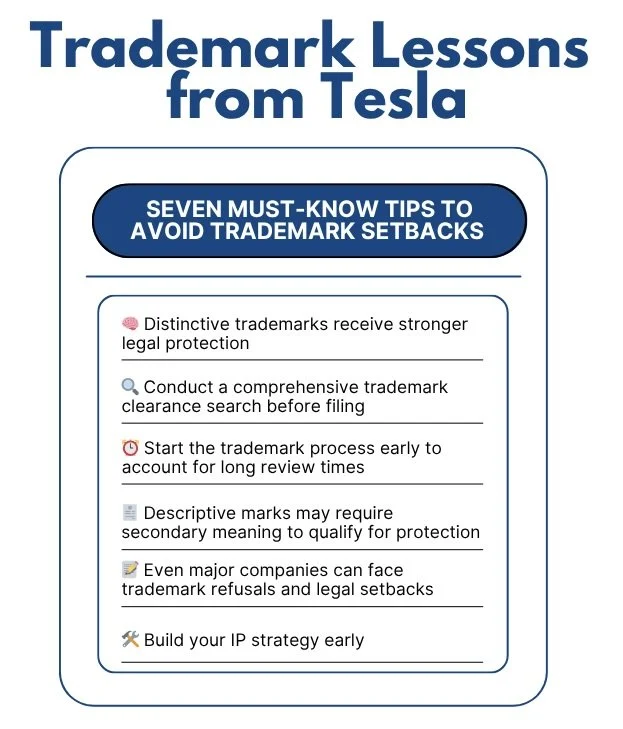Lessons from Tesla’s Cybercab and Robotaxi Trademark Applications
As Tesla prepares to roll out its robotaxi service this summer, the U.S. Patent and Trademark Office (USPTO) issued refusals of Tesla’s applications to register the trademarks “Robotaxi” and “Cybercab.” The USPTO cited two reasons for its refusals: “Robotaxi” was deemed too descriptive, and “Cybercab” created a likelihood of confusion.
The USPTO’s refusal of “Robotaxi” as merely descriptive was based on Section 2(e)(1) of the Lanham Act. The term was not sufficiently distinctive, and was found to be a generic version of “robotic taxi.” For more information on descriptive vs. distinctive trademarks, see our earlier post on secondary meaning in trademark law. The UPSTO’s refusal of “Cybercab” was based on Section 2(d) of the Landham Act, citing a likelihood of confusion with an existing registration for “Cybercars.”
Trademark protection is a multi-step process — timing and preparation can make all the difference.
Although the refusals were non-final and Tesla may respond or amend the company’s earlier applications, Tesla has instead recently moved forward with other trademark filings for the phrase “Tesla Robotaxi.” However, it will likely take months for a decision to be issued: Tesla’s applications for “Robotaxi” and “Cybercab” were filed in October 2024, and the USPTO issued refusals in May 2025.
From initial filings to pending decisions, this timeline shows how trademark delays can overlap with product launches.
Separate from Tesla’s trademark roadblocks, their rollout of the robotaxi pilot program in the San Franscisco area is still pending regulatory approval. Tesla is awaiting permits from California’s DMV and Public Utilities Commission before launching their paid service for autonomous robotaxis in the Bay Area. Meanwhile, Tesla has recently launched a small-scale pilot program in Austin, Texas with a small fleet of vehicles. The service is currently open to a limited number of riders by invitation only.
Here are some takeaways from Tesla’s experience to consider when seeking trademark protection for your brand’s assets:
The more distinctive your trademark, the stronger the legal protection it receives.
Research existing trademarks: a full trademark clearance search can identify exact matches as well as similar names of related goods and services. This can help shape your process in selecting a name that is more likely to be granted trademark protection.
Timing is key: keep in mind that the USPTO process can be lengthy.
Secondary meaning can sometimes be acquired through a long period of continuous use, which can be used to justify trademark protection. If you plan to seek trademark protection, do so well in advance of a product launch, as it may be difficult to invest in branding and marketing and then pivot based on USPTO responses.
Even larger companies like Tesla can face hurdles with trademark protections. When you’re first building your brand, lay the groundwork early on and be strategic about your trademark protection strategy.
Learn from Tesla’s experience with seven practical tips to guide your own trademark strategy.



